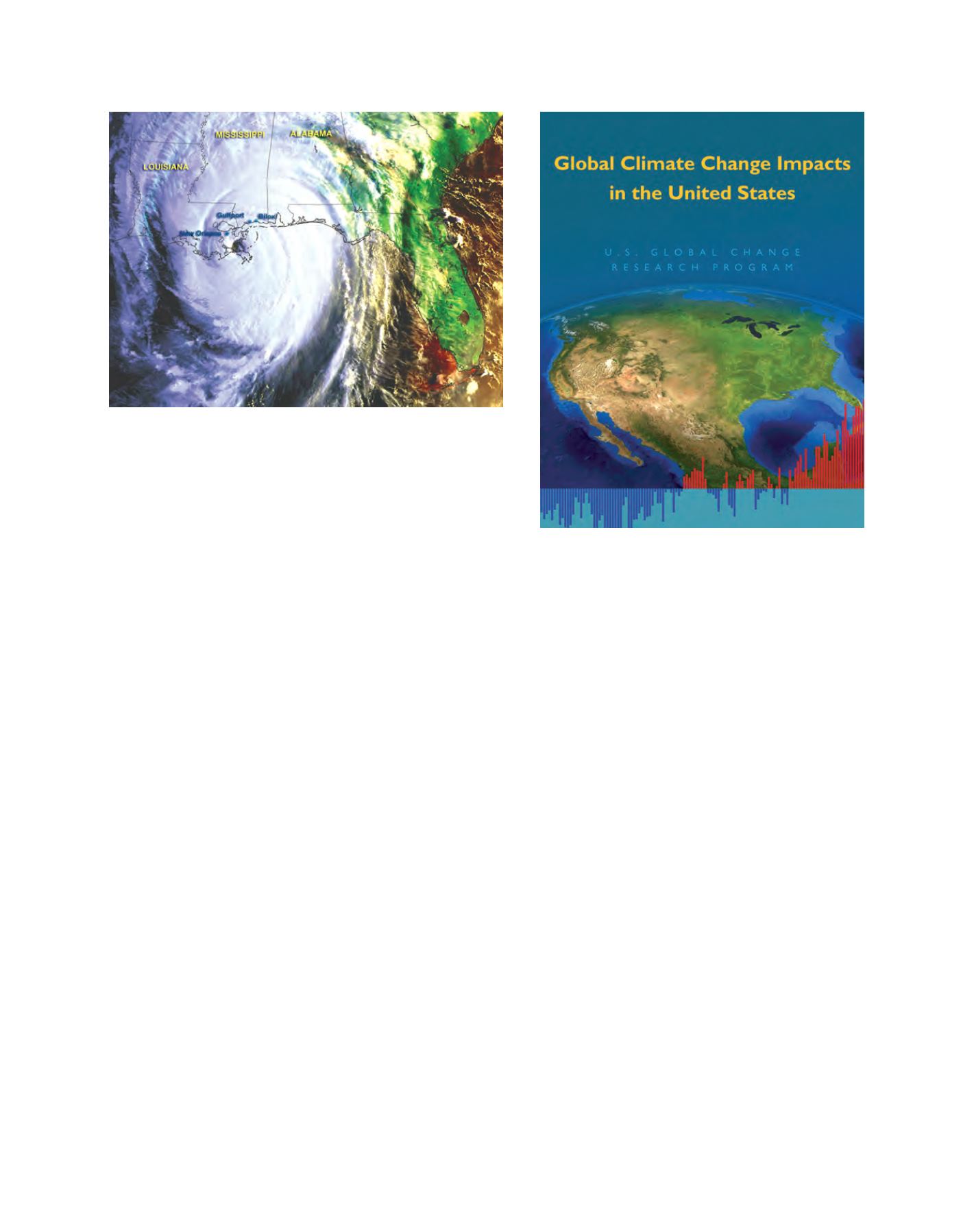

[
] 34
T
he
I
mpacts
and
I
mplications
of
C
limate
C
hange
and
V
ariability
options will likely emerge as the best way forward. Decisions about
what that mixture might be, however, will need to be supported
by additional research. This research will also need to consider
the potential for unintended consequences of different mitigation
options (for example, widespread adoption of biofuels), so those
options with the largest negative impacts can be identified, and deci-
sion makers can make informed choices about the inherent costs
and benefits of different strategies.
Enhance understanding of how society can adapt
– Given the large
climate forcing already produced by humanity, the need to adapt to
variability and change is inevitable regardless of mitigation efforts.
The ability of communities, regions, and sectors to adapt, however,
is not well understood. This gap is not surprising considering the
complex interplay among environmental, political, social, and
economic considerations involved, but interdisciplinary research
on adaptation decision making is needed to better understand the
effectiveness of proposed options. Gaps need to be filled between
climate information currently available and the development of new
guidelines for infrastructure, and regular assessments of adaptation
measures taken need to be made.
Potential benefits of climate services
Assuming the above agenda is widely adopted, including by an NCS
in the US, we envision benefits accruing across a broad spectrum
of sectors:
Living marine resources
– Incorporating climate information into
the management of US fisheries would help support a USD60 billion
per year fishing industry. Similarly, the management of endangered
and protected marine species would benefit from relevant climate
research and model projections.
Energy
– Climate information will allow energy producers to
operate more efficiently, for example in the operation of reservoirs
that are sensitive to seasonal climate events. Investments in renew-
able energy sources like wind or solar will be better informed.
Transportation
– Insights into future climate variability and
change will provide a scientific foundation for long-term invest-
ments in infrastructure.
Human health
– Climate observations and predictions can be used
to anticipate adverse health outcomes associated with future heat
waves, vector-borne diseases, and food or water-borne
bacteria and viruses.
Water resources
– Projected changes in patterns
of precipitation and related factors will be impor-
tant considerations in a variety of investments and,
ultimately, in ensuring sustainable populations and
ecosystems. This information will enable sounder long-
term investments and help anticipate acute shortages.
Population and demography
– In response to food and
water shortages, large population shifts can occur and
lead to political instability in many regions of the world.
Climate information will allow the US and other devel-
oped nations to prepare to assist with such potential
upheavals.
Decision support for water resources:
NIDIS as a model for climate services
Sectors associated with water resources deserve addi-
tional mention. The potential impact of climate
variability and change on the quality and quantity of
fresh water is so profound that steps to deal with it in
the US began even before an NCS is formally estab-
lished. Those steps, beginning with the signing into
law of the National Integrated Drought Information
System (NIDIS) Act of 2006, provide a good example of
how a full service might function. As a comprehensive
early warning information system for drought, NIDIS
is being developed to consolidate hydrological and
socioeconomic data; develop a suite of usable drought
decision support and simulation tools focused on criti-
Hurricane Katrina, August 29, 2005
Global Climate Change Impacts in the United States: a state-
of-knowledge report published by the US Global Change
Research Program
Image: NOAA
Image: Karl et al. (2009)
















